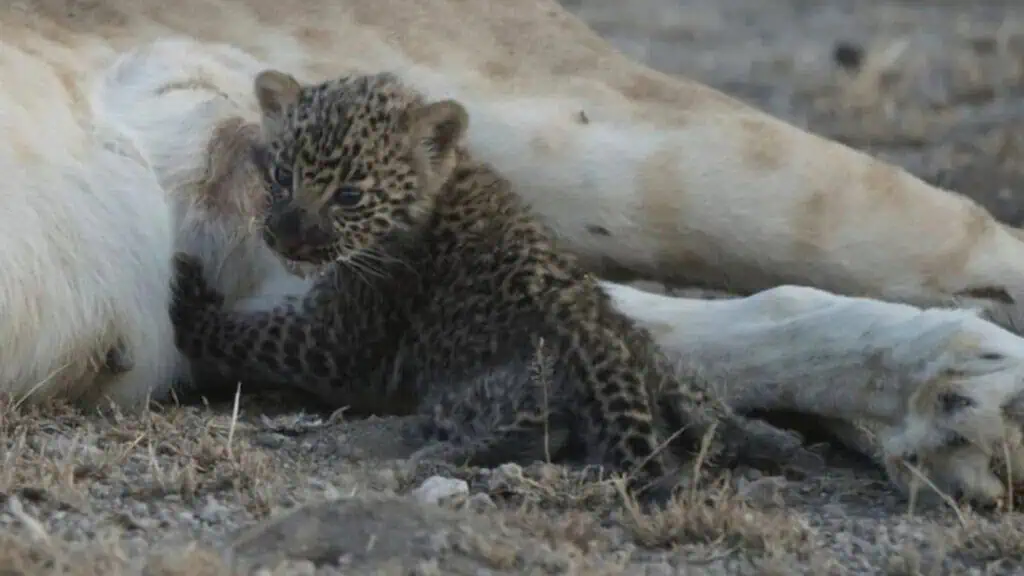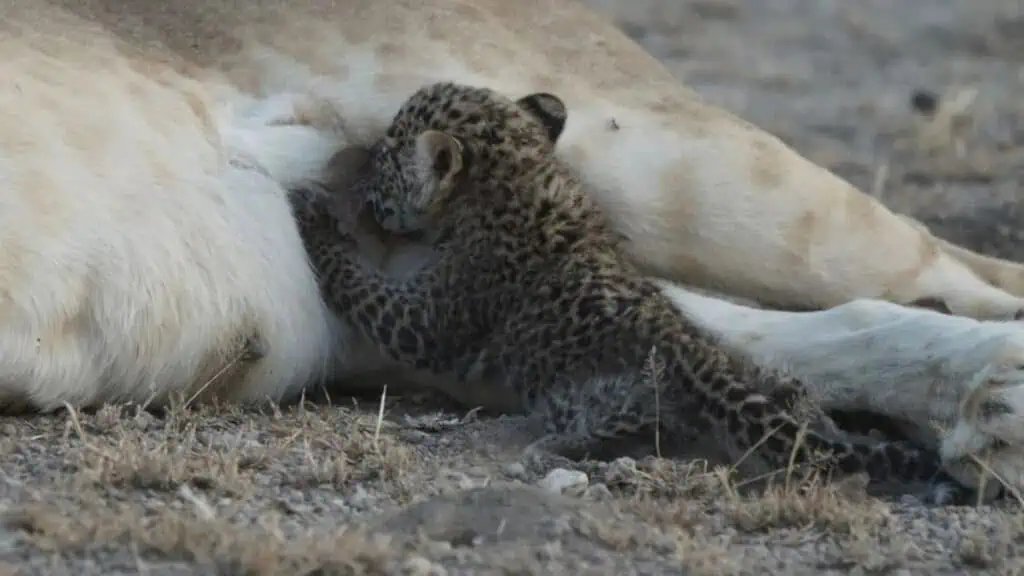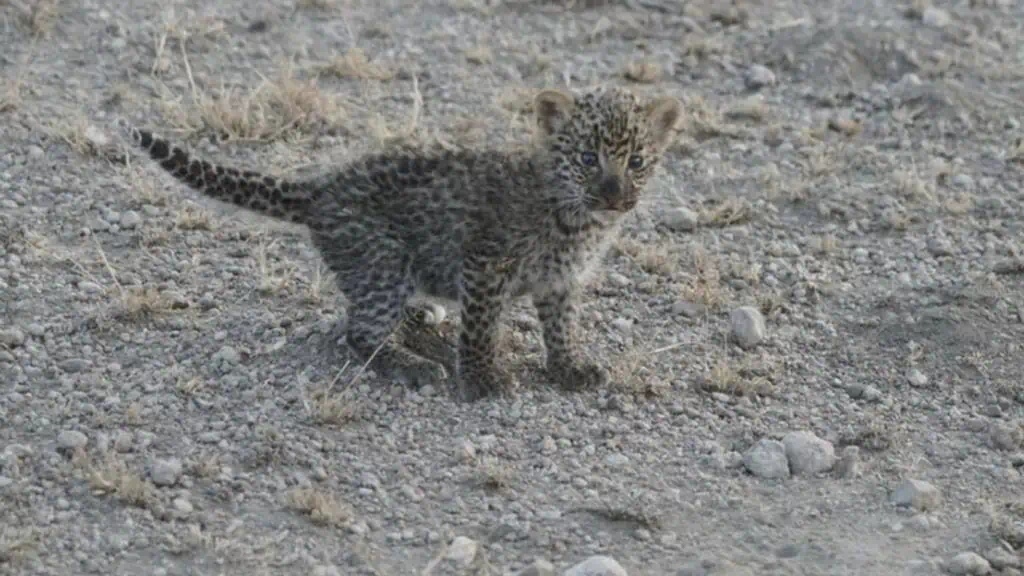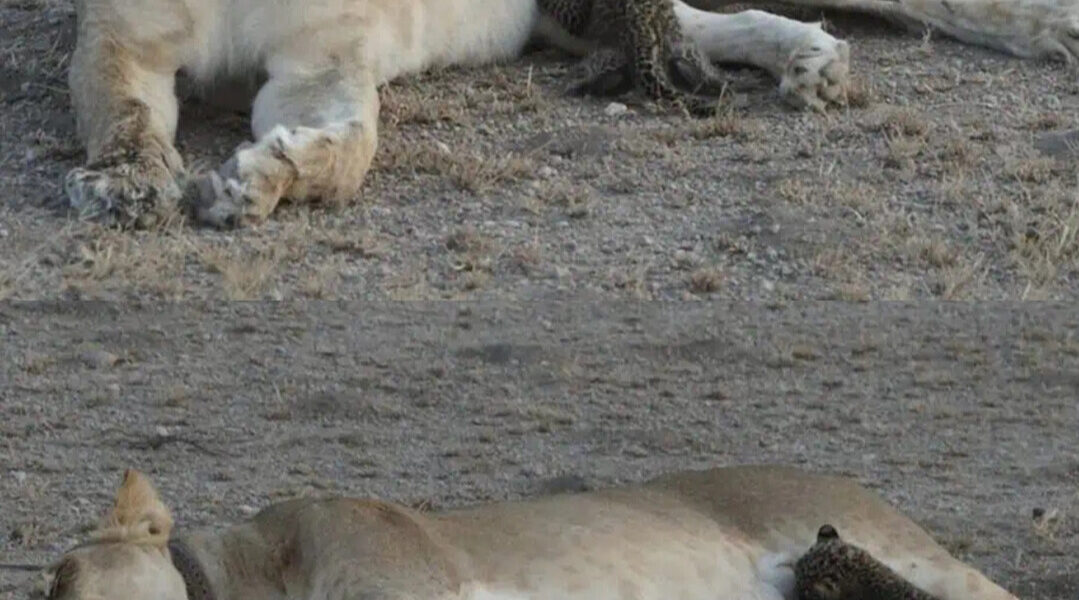In the vast wilderness of Tanzania’s Ngorongoro Conservation Area—a place carved into legend as a United Nations World Heritage site—nature briefly broke its own rules. In 2017, a guest at a local lodge captured a scene few could have imagined: a lioness curled protectively around a leopard cub, nursing it as though it were her own.

The photographs, later shared with the Associated Press, stunned conservationists. Lions and leopards are fierce rivals in the wild. They compete for territory, for food, for dominance. Encounters between the two species often end in violence. Yet here was a lioness, her golden frame embracing the spotted cub of her natural enemy, offering not teeth but milk.
Ingela Jansson, head of the conservation group KopeLion, offered one explanation. The lioness, she suggested, may have lost her own litter and in her grief had turned maternal instincts toward the orphaned leopard. With a touch of humor, Jansson called it a case of “confusion at the supermarket”—as if the lioness had simply picked up the wrong child.

To scientists, the sight was more than humorous; it was profound. Luke Hunter, then president of the conservation organization Panthera, noted that while adoptions within the same species were well documented, this kind of cross-species nursing among wild cats was nearly unheard of. “The cub’s chances of survival are uncertain,” he cautioned, pointing out that other lions might recognize it as an outsider and kill it. Still, the moment stood as a testament to nature’s occasional flashes of tenderness across enemy lines.

A year later, in 2018, an even more astonishing story unfolded thousands of miles away in Gir National Park, Gujarat, India. There, researchers watched as a lioness adopted a leopard cub and raised it alongside her own young. She nursed him, shared her kills with him, and defended him as though he were born of her body. For several weeks, the leopard thrived under the warmth and protection of his unlikely mother.

Ultimately, tragedy came: the cub succumbed to a pre-existing illness. But the record of his short life remains one of the most extraordinary cases of animal behavior ever observed.
Dr. Stotra Chakrabarti, a University of Minnesota researcher who documented the event in the journal Ecosphere, still speaks of it with awe. In his seven years studying Gir’s lions, he called it his most unforgettable “wow” moment.

These rare glimpses remind us that the wild, so often seen as governed by tooth and claw, sometimes bends toward something softer. Grief, instinct, confusion, or something deeper—we may never fully understand what drives one species to shelter another.
What we do know is this: for a fleeting moment in the wild, a lioness looked past the spots of her supposed rival and simply saw a child in need.




